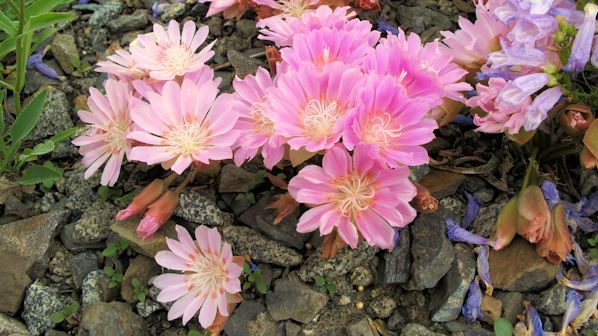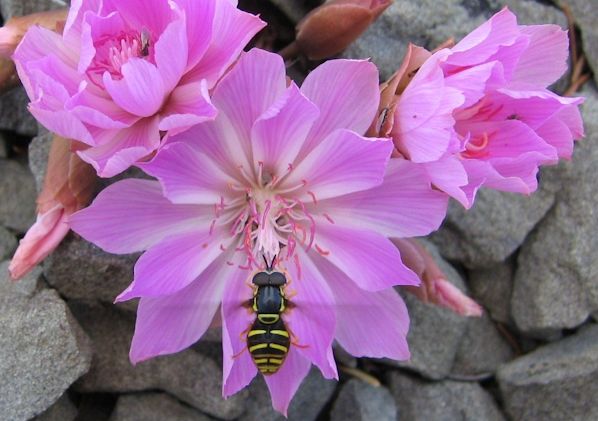Behold the bitterroot
The gorgeous flowers of bitterroot (Lewisia rediviva) seemingly pop onto the soil surface in April in much of our region. The blooms can vary in color from a deep rose to lighter shades of pink and even pure white and can be as large as 2″ across, quite the sight when densely spread across a otherwise barren patch of ground! The fleshy leaves were present as soon as the snow left in February or March, but the entire plant will dry up and disappear by summer, only for the leaves to again show up in the fall. This ability to go dormant in the summer, along with its extensive tap root, allows this species to grow in very dry and rocky sites.
Bitterroot is found from British Columbia to California and from the Cascades to the Rockies, and in the late 1800’s was named the state flower of Montana. In our state it is found in almost all counties east of the Cascade crest and ranges from the shrub-steppe to over 4000′ in the mountains. Many groups of Native Americans in the interior West have harvested the roots of this plant for food. It is dug in the early spring before flowering and must be quite nutritious as it is not easy to get the long roots out of the rocky soils it grows in!
Meriwether Lewis collected whole plants in Montana during his 1805-06 expedition and gave them to the botanist Frederick Pursh after returning to Philadelphia. Pursh described a new genus and named it Lewisia in honor of Lewis. The species was named rediviva from the Latin word meaning “reviving from a dry state” referring to the ability of the plant to grow again after having been dug up, dried whole, and stored for months, which the specimen presented to Pursh in fact did, much to the amazement of those at The Academy of Natural Sciences in Philadelphia!





